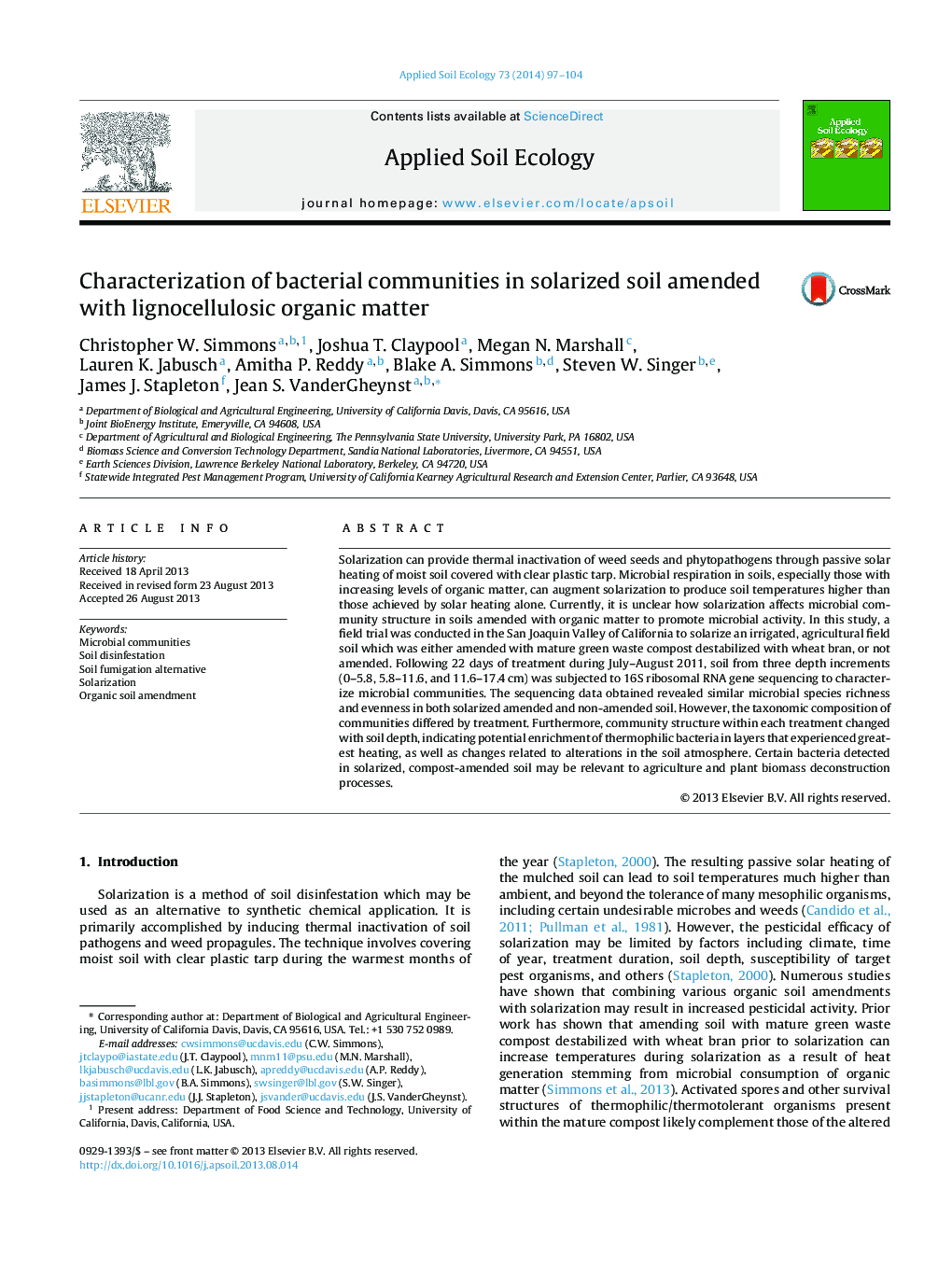| کد مقاله | کد نشریه | سال انتشار | مقاله انگلیسی | نسخه تمام متن |
|---|---|---|---|---|
| 4382372 | 1617810 | 2014 | 8 صفحه PDF | دانلود رایگان |
• Microbial community structures in solarized soils are studied.
• Soils were amended with mature compost and organic matter prior to solarization.
• Bacterial composition varies with depth in solarized soils.
• Enriched bacteria in solarized soils reflect thermotolerance of consortia in inocula.
• Soil amendment affects levels of agriculturally relevant bacteria after solarization.
Solarization can provide thermal inactivation of weed seeds and phytopathogens through passive solar heating of moist soil covered with clear plastic tarp. Microbial respiration in soils, especially those with increasing levels of organic matter, can augment solarization to produce soil temperatures higher than those achieved by solar heating alone. Currently, it is unclear how solarization affects microbial community structure in soils amended with organic matter to promote microbial activity. In this study, a field trial was conducted in the San Joaquin Valley of California to solarize an irrigated, agricultural field soil which was either amended with mature green waste compost destabilized with wheat bran, or not amended. Following 22 days of treatment during July–August 2011, soil from three depth increments (0–5.8, 5.8–11.6, and 11.6–17.4 cm) was subjected to 16S ribosomal RNA gene sequencing to characterize microbial communities. The sequencing data obtained revealed similar microbial species richness and evenness in both solarized amended and non-amended soil. However, the taxonomic composition of communities differed by treatment. Furthermore, community structure within each treatment changed with soil depth, indicating potential enrichment of thermophilic bacteria in layers that experienced greatest heating, as well as changes related to alterations in the soil atmosphere. Certain bacteria detected in solarized, compost-amended soil may be relevant to agriculture and plant biomass deconstruction processes.
Journal: Applied Soil Ecology - Volume 73, January 2014, Pages 97–104
